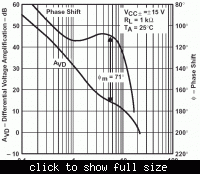goldsmith
Advanced Member level 6
- Joined
- Dec 14, 2010
- Messages
- 3,981
- Helped
- 741
- Reputation
- 1,486
- Reaction score
- 726
- Trophy points
- 1,413
- Location
- Tehran - IRAN
- Activity points
- 24,546
Dear All
Hi
Thank you for your time .
I'm looking for an opamp , with GBWP , around 40MHZ . ( +-15 volts ) .
I'll be grateful if you guide me to find it .
Best Regards
Goldsmith
Hi
Thank you for your time .
I'm looking for an opamp , with GBWP , around 40MHZ . ( +-15 volts ) .
I'll be grateful if you guide me to find it .
Best Regards
Goldsmith
